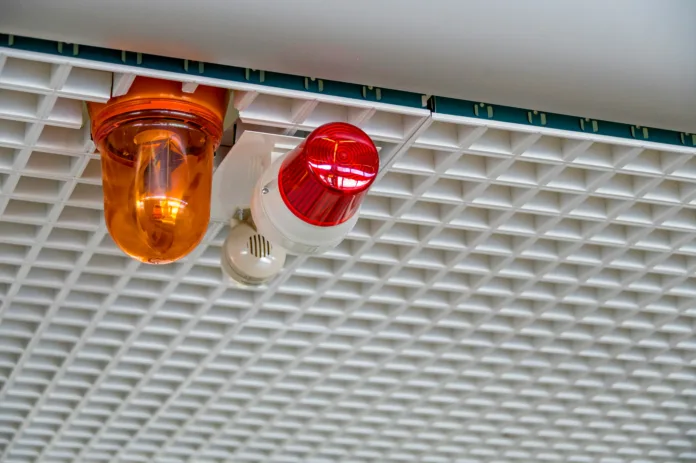On Saturday morning, September 30, 2017, I was awoken by the sound of my name coming from the bathroom. I could hear the alarm in my spouse’s voice and knew something was awry. Their water had broken, and they told me today might be the day we would have a baby. Naturally, I began to panic as my mind swirled with concerns, emotions, questions, people to update, and items for a to-do list.
Recently, the Perspectives editorial team posed the question, “What are you “freaking out” about?” and my mind immediately came back to this moment. I don’t think they had the personal life-changing events of professionals in mind with this prompt, yet with this memory at my forefront, I wanted to better understand what it meant to “freak out” and apply it to a professional setting. Thus, I used the gold-standard research tool for millennials – internet search engines. The consensus from the World Wide Web and internet dictionaries for freaking out was heightened emotions. A perfect description for much of what I was experiencing on September 30, 2017.
Professionally speaking, identifying what I was freaking out about came quickly. I am freaking out that colleges and universities, and subsequently fraternity and sorority communities, have the opportunity to go all in on saving lives and are choosing not to do so. I am talking about the availability or unavailability of naloxone on college campuses and in fraternity and sorority communities. According to the National Institute for Drug Abuse (NIDA), naloxone is a medicine that rapidly reverses opioid overdose (Naloxone DrugFacts, 2022). Campuses and communities could easily overwhelm their students, faculty, and staff with naloxone availability but have chosen not to. Despite the ability to literally press a button on a nasal spray to save a life, many campuses and professionals proceed as if they don’t have the tools necessary to save lives. I continue to “freak out” because of the lack of urgency while countless student lives are lost yearly. It is important to note that many professionals and students have advocated vigorously for naloxone to be made available or more widely distributed, and this has been met with consistent resistance or zero consideration.
Let’s back up and look at the problem from a larger point of view. Approximately every six minutes and 21 seconds, there is a fatal opioid overdose in the United States (Ahmed et al., 2024). With each overdose touching our campus communities, directly or indirectly, one harrowing truth underlines the tragedy and calls for action. Every overdose death is preventable if a bystander intervenes with naloxone in time. With approximately 19 million Americans enrolled in a post-secondary education program (U.S. Department of Education & National Center for Education Statistics, Integrated Postsecondary Education Data System (IPEDS), 2022), campuses have both a responsibility to support students, and an opportunity to dramatically impact the direction of the overdose crisis by equipping students, staff, faculty, and alumni with the knowledge and tools to intervene effectively in an opioid emergency.
The availability of a lifesaving tool not being used or even available heightens my emotions, specifically anger and sadness. Imagine a world where seat belts or other automotive safety features weren’t made available in vehicles, or where they existed but were not widely implemented and utilized. A more similar comparison would be the discovery/creation of cardiopulmonary resuscitation (CPR) but not allowing or wanting people to use it. It seems blasphemous to think a lifesaving tool would be ignored, but unfortunately, it is the current reality. Campuses must act; they are not doing enough.
Naloxone has been available as a nasal spray since 2015 when the FDA first approved NARCAN®. The nasal spray form requires no assembly and is sprayed into one nostril as the person is on their back (National Institute on Drug Abuse, 2017). Training on the use of naloxone and identifying opioid overdose is widely available, but formal training for use is not required. The use of naloxone is that easy. Additionally, there are no potential harms for using naloxone nasal spray if it turns out not to be an opioid overdose.
Lack of distribution and availability on campuses varies for numerous reasons but centers around common themes of liability and responsibility. Campuses must begin to take ownership of the ability to prevent student death. Liability concerns typically focus on the optics of the campus having a drug problem or the false dichotomy of naloxone availability encouraging student drug use. Unfortunately, people will continue to use drugs with or without the availability of naloxone. The availability of fake prescription pills on social media and e-commerce, coupled with college students’ lack of understanding of how and where to purchase legitimate prescription medications, elevates the risk students are facing due to the presence of fentanyl.
The Drug Enforcement Administration (DEA) has a campaign called “One Pill Can Kill,” yet in the same vein, the availability and administration of one dose of naloxone can save someone’s life. Colleges and universities have been quick to grab onto the DEA’s message but scoff at the idea that the messaging isn’t enough to truly address the risk and reality of overdose. Potentially saving a life must be more important than liability. Shunning or shielding the institution from liability is a dereliction of responsibility to support students. Students do not live or operate in a vacuum; as such, if they make the decision not to use substances, it does not free them from the wrath of the opioid overdose crisis. More than 42% of American adults know at least one person who has died from an opioid overdose (Athey et al., 2024).
Yes, naloxone availability and distribution are about preventing students from dying via overdose. It is also about supporting students who want to respond in moments of crisis, such as an opioid overdose and giving students the tools, education, and confidence to care for one another. Wouldn’t we rather students “freak out” about ensuring they administer the naloxone correctly and remember to call for emergency care rather than “freak out” about not having or knowing where to get naloxone in time?
It is imperative to view this as our problem—a problem impacting the fraternity and sorority experience. The opioid overdose crisis is here; it has been here. For years, opioids seemed like a problem for other people. Fentanyl-laced drugs, particularly powders and pills, have changed that. Fortunately, the creation and increased availability of naloxone has and will continue to help quell the current impact and hopefully make strides to end it. As such, we must begin mobilizing, as a community and profession, to increase efforts to develop effective opioid overdose prevention and response strategies. Fraternity and sorority professionals are not alone in this effort. Combating the opioid overdose crisis on campus requires communal effort from the institution, local community, and global community.
At this moment, I hope your emotions are heightened. More than likely, your involvement in the fraternity and sorority experience has been sustained because you care about the experience and the students. It is okay, if not critical, to “freak out” when we realize there is more we can do to support students. However, we must avoid the “freak out” response of trying to do as much as possible simultaneously. If you are unsure where to start, the Higher Education Center for Alcohol and Drug Misuse Prevention and Recovery (HECAOD), the SAFE Project, and NASPA are committed to supporting every campus in their endeavors to initiate or advance their work and have created a checklist for beginning/expanding efforts for opioid overdose and harm reduction efforts on campus (Esakoff et al., 2024). All three organizations are committed to supporting campuses in their opioid overdose prevention and harm reduction work through education and resources available on each website.
Saturday, September 30 turned into October 1, the day I became a dad. Naturally, I began a whole new adventure of “freaking out.” In fact, over the years, my emotions have heightened a lot throughout this adventure of parenthood, and I think that is a good thing. “Freaking out” simply means we care. Emotions are heightened because something feels out of place, and we want to avoid or minimize harm from our place of care. Naloxone allows us to avoid one of the ultimate harms. I invite you to stand for the idea that brotherhood and sisterhood means keeping each other safe. I invite you to join me in freaking out about saving more lives.
Special thanks to Dylan Dunn from the SAFE Project for his thoughts and ideas on this article.
References
Ahmed, F. B., Cisewski, J. A., Rossen, L. M., & Sutton, P. (2024). Provisional drug overdose death counts. National Center for Health Statistics.
Athey, A., Kilmer, B., & Cerel, J. (2024, March 1). An Overlooked Emergency: More Than One in Eight US Adults Have Had Their Lives Disrupted by Drug Overdose Deaths. American Journal of Public Health, 114(3), 276-279.
Esakoff, E., Dunn, D., & Hosni, A. (2024, May). Opioid Overdose on Campus: Key Steps to Expand Harm Reduction Efforts. NASPA. Retrieved September, 2024, from https://naspa.org/blog/opioid-overdose-on-campus-key-steps-to-expand-harm-reduction-efforts
Naloxone DrugFacts. (2022, January 11). National Institute on Drug Abuse. Retrieved October 2, 2024, from https://nida.nih.gov/publications/drugfacts/naloxone
National Institute on Drug Abuse. (2017, March). Naloxone for opioid overdose: Life-saving science. National Institutes of Health. Retrieved 2024, from https://archives.nida.nih.gov/publications/naloxone-opioid-overdose-life-saving-science
U.S. Department of Education & National Center for Education Statistics, Integrated Postsecondary Education Data System (IPEDS). (2022). Spring 2011 through Spring 2022, Fall Enrollment component. Digest of Education Statistics.

About the Author
Logan Davis is the Outreach and Engagement Manager at the Higher Education Center for Alcohol and Drug Misuse Prevention and Recovery (HECAOD). Prior to this role Logan worked in fraternity and sorority life and has experience working on a campus & with an (inter)national organization. In his current role Logan has been able to learn more about prevention and recovery and has been able to blend new knowledge with previous experience from working with fraternities & sororities. Logan has a master’s degree from Louisiana State University, where he was a part of the Higher Education and Student Affairs program. He has become a trusted & go-to source on prevention in the fraternity and sorority space.




